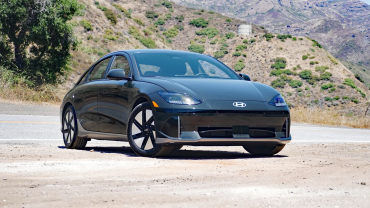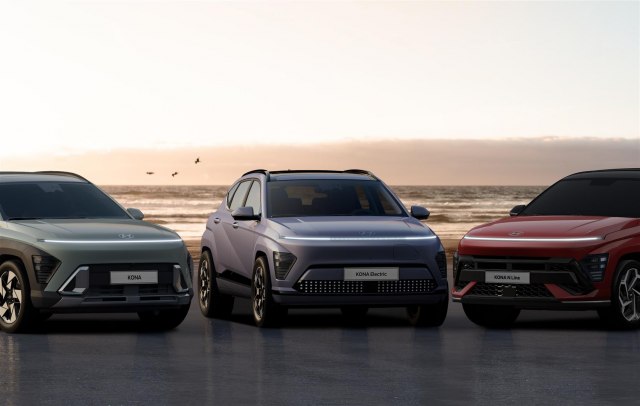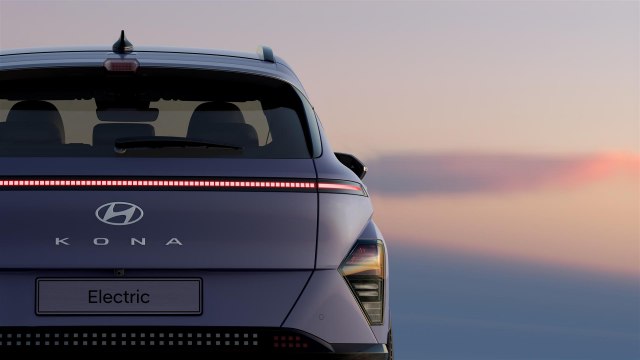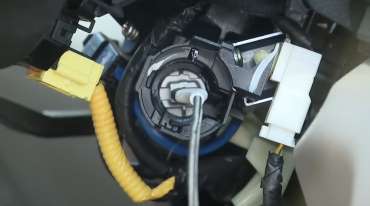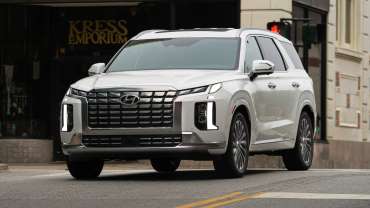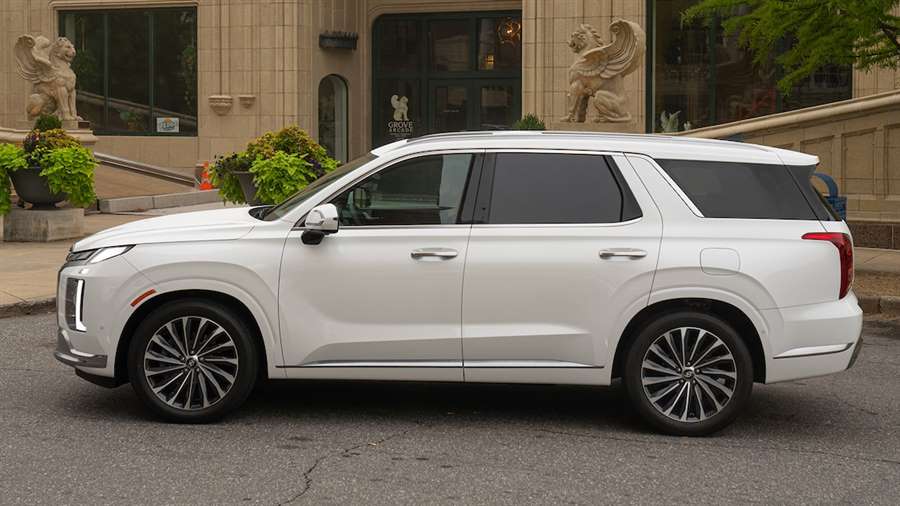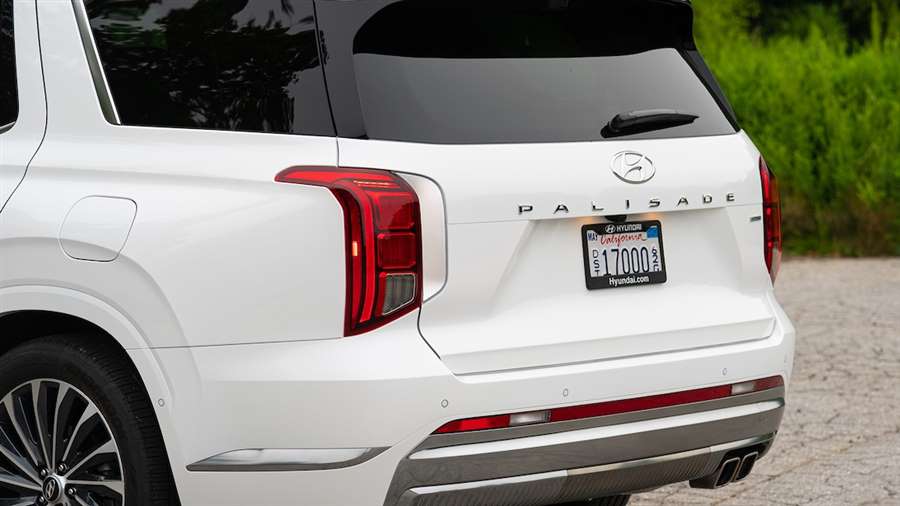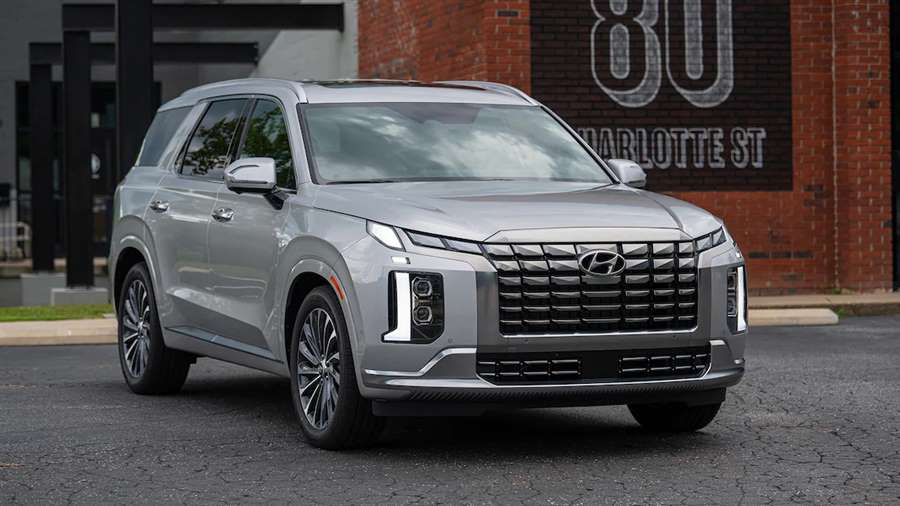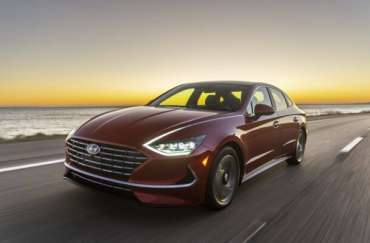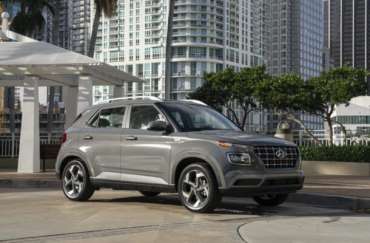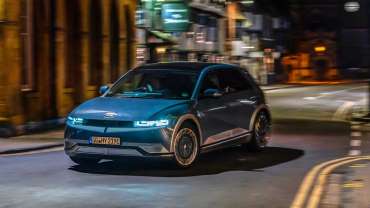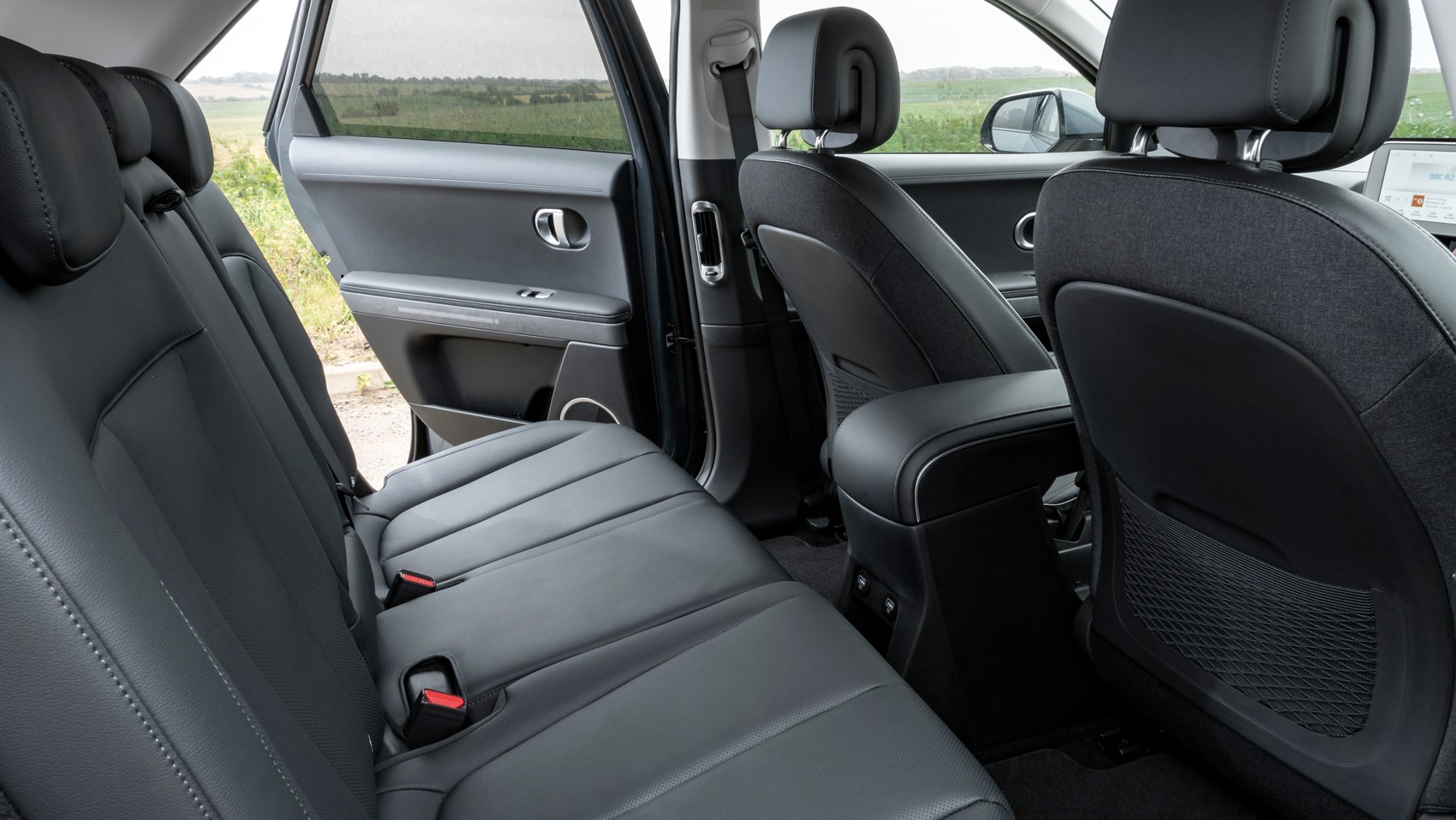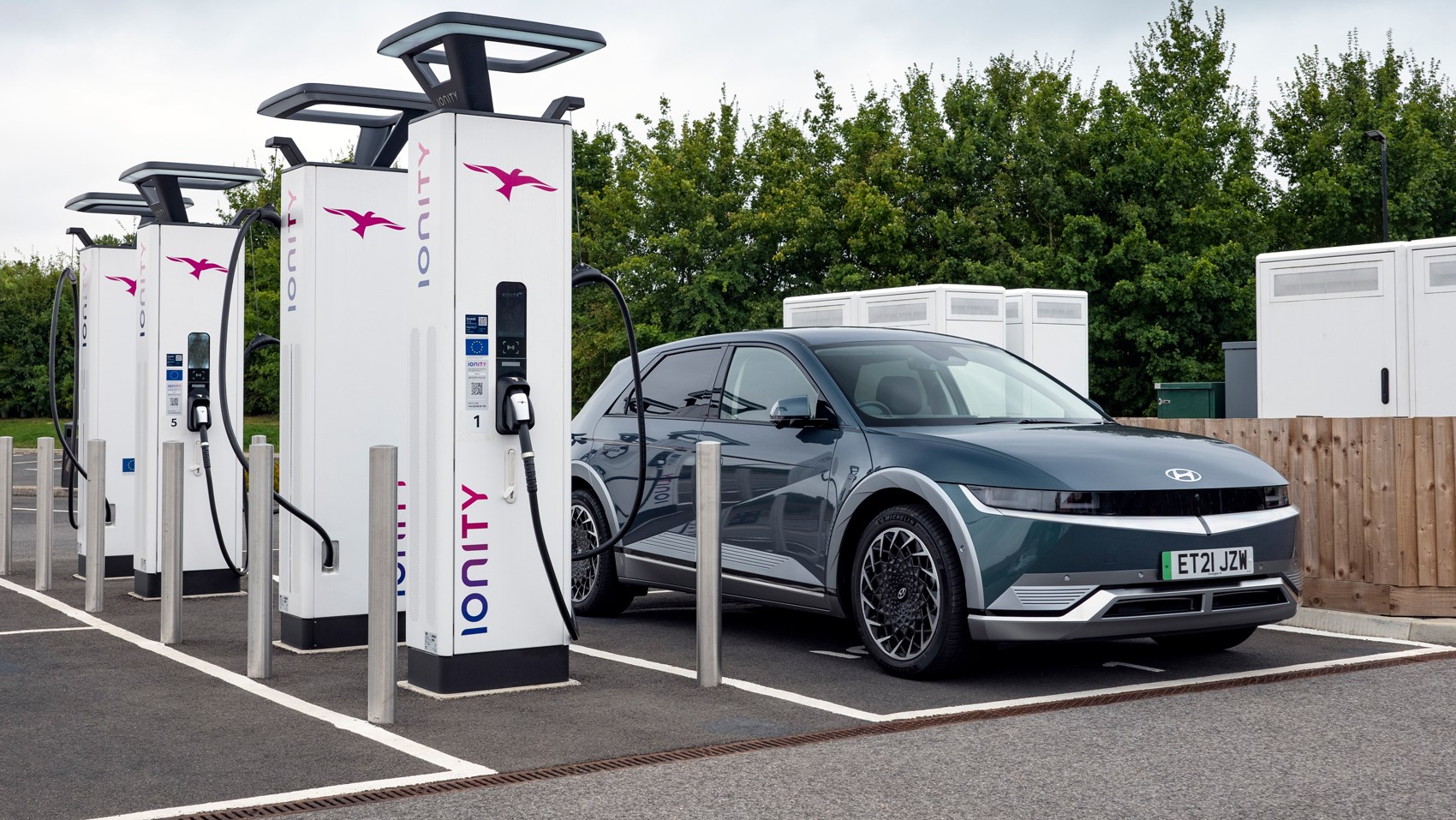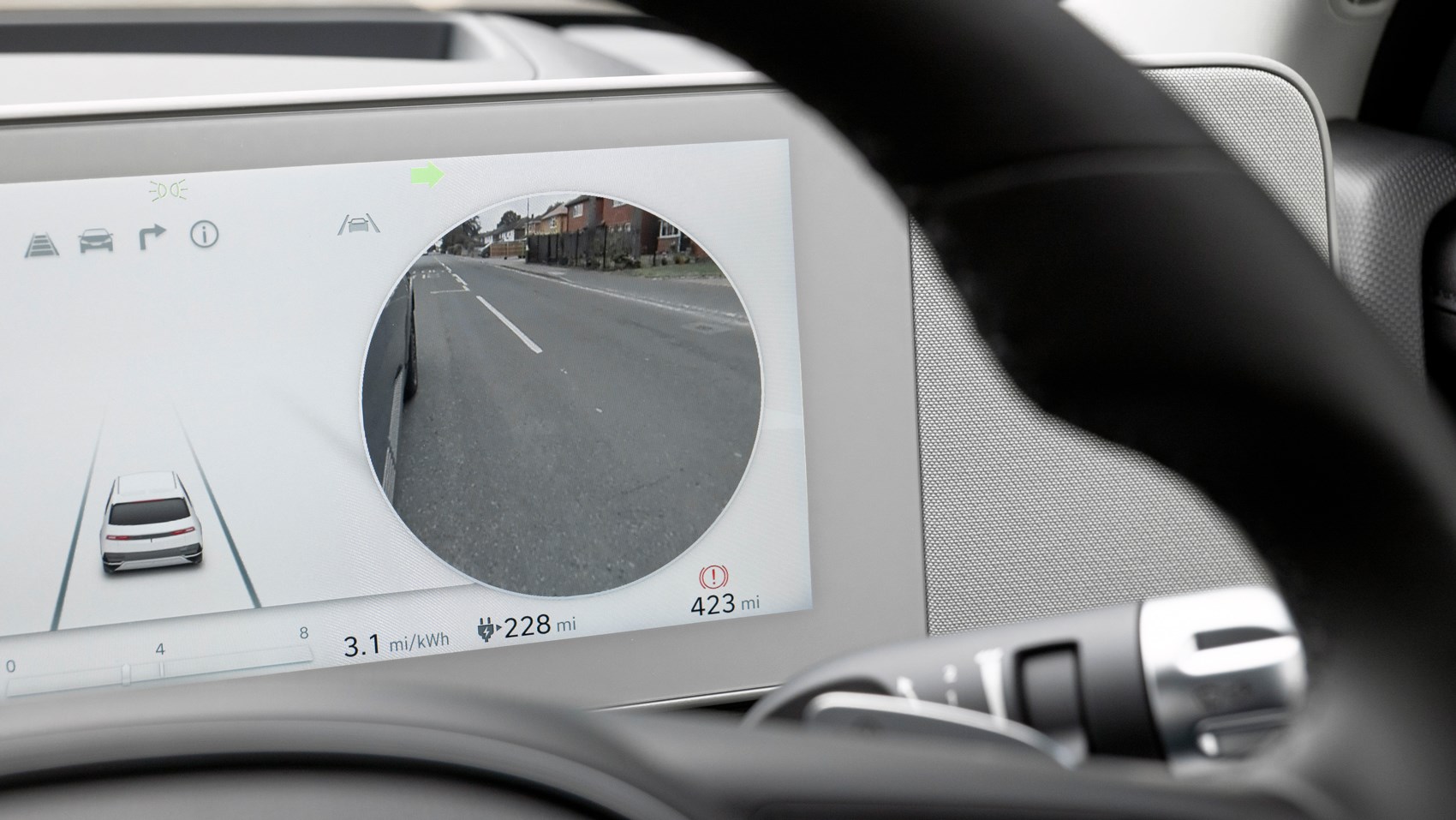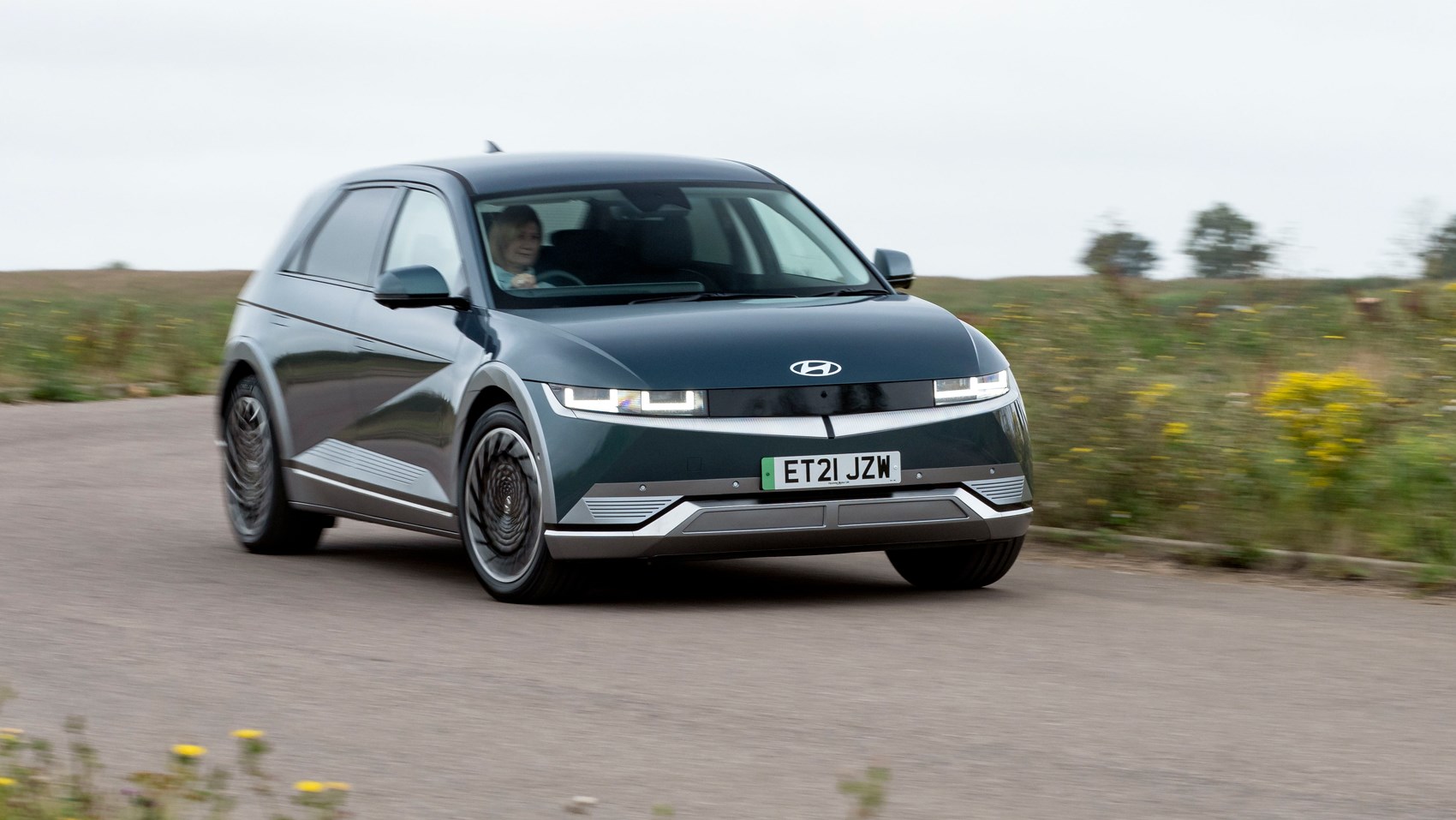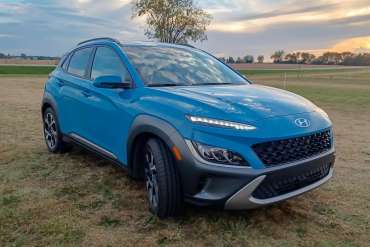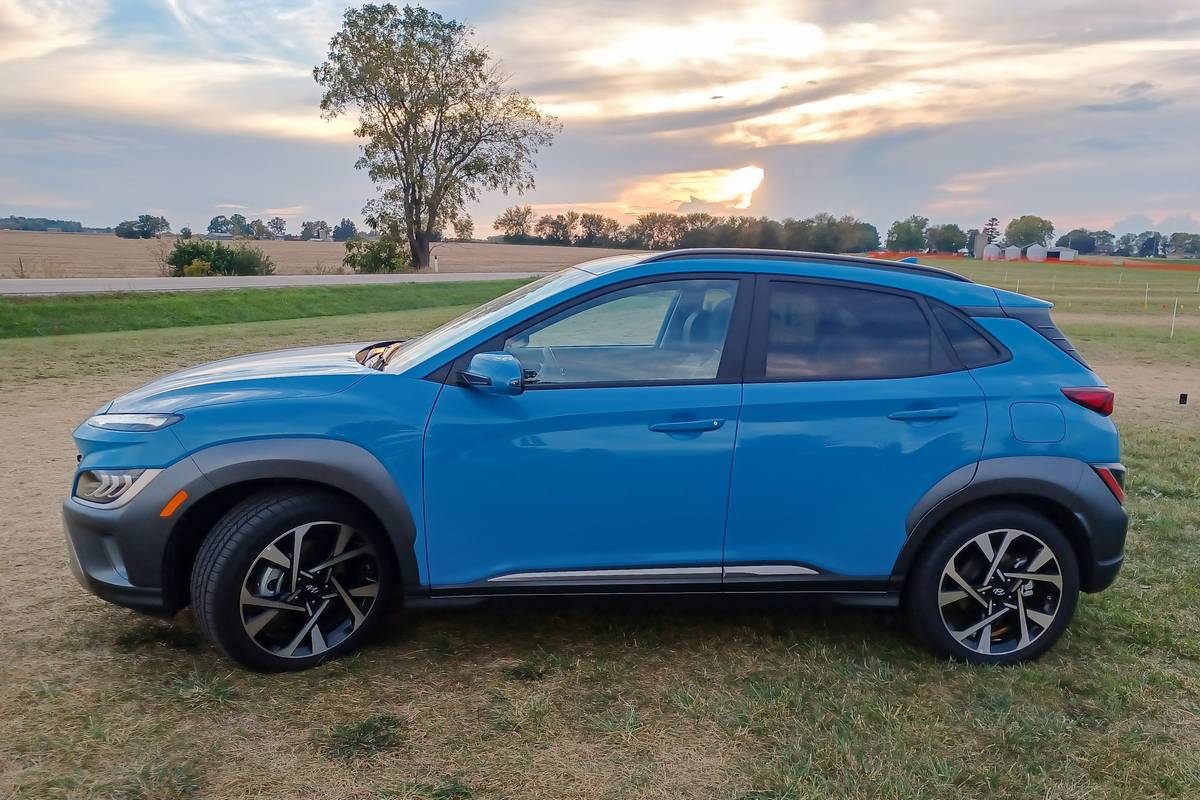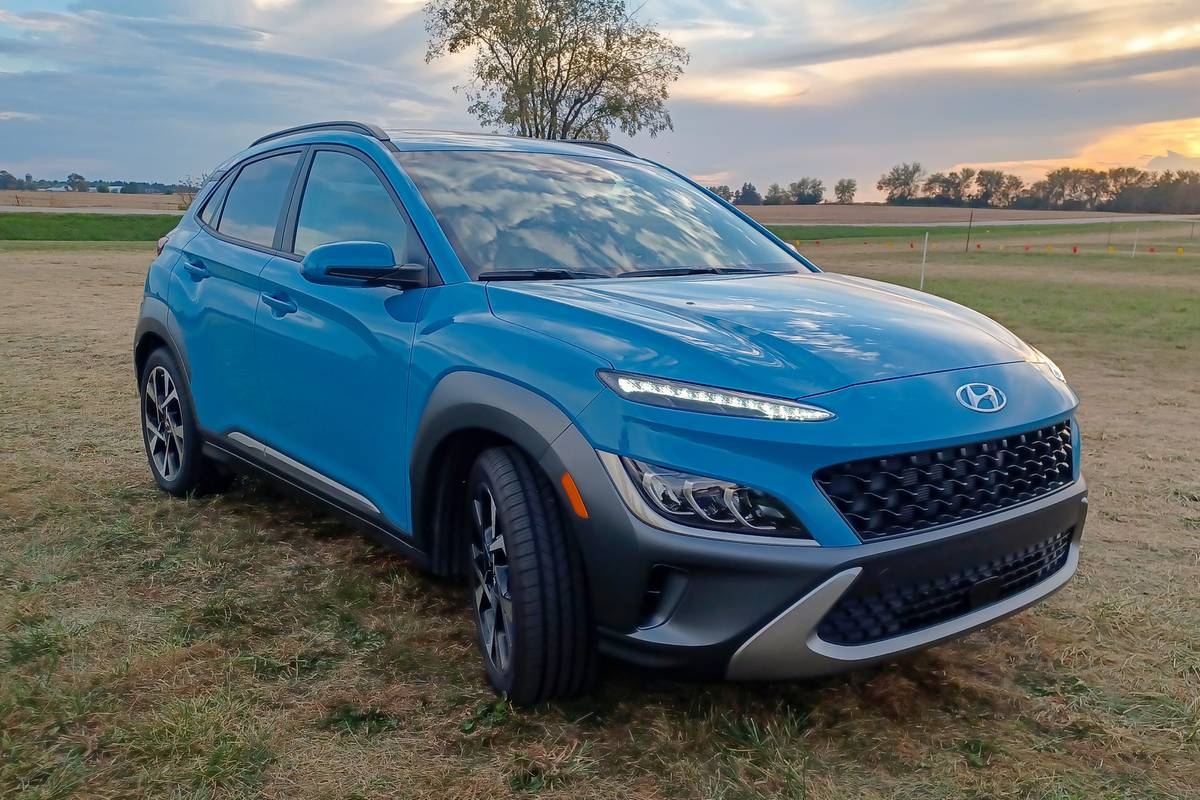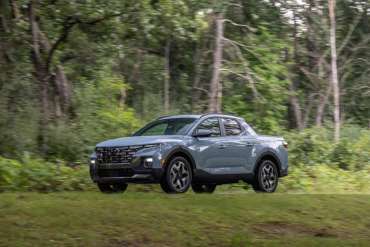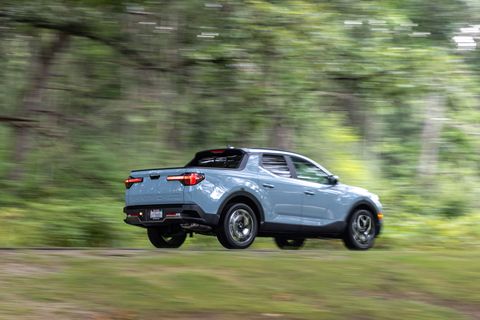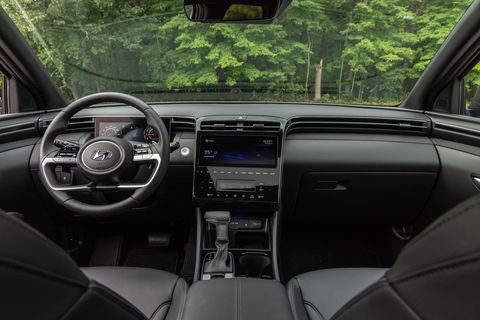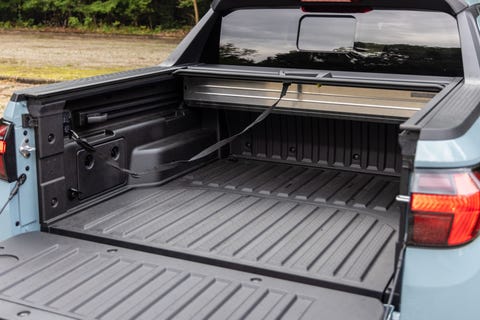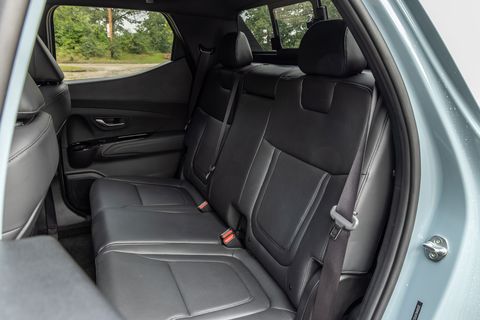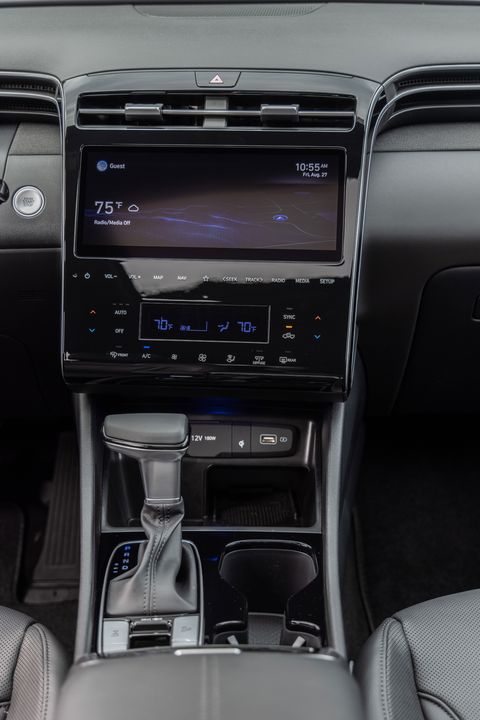Futuristic sedan offers ample range, rapid charging and a great driving experience
The Ioniq 6 is the best of the E-GMP vehicles to drive, and its aerodynamic shape makes it super efficient with a long range. You give up utility versus the Ioniq 5, but the benefits will be worth it for some.
Pros: Fun, efficient driving; stand-out design; quick charging and ample range; well-executed safety tech
Cons: Too-cheap interior materials, especially in SE; some irritating controls; small trunk; max range tied to base trim
Crossover SUVs may rule the day, but there’s still a market for good old-fashioned sedans. Of course, there’s absolutely nothing else old-fashioned about the 2024 Hyundai Ioniq 6, an electric car that looks like it arrived in your driveway from the future. Indeed, its striking design is a key part of its appeal – and not just from an aesthetic standpoint. The ultra-aerodynamic shape contributes to exceptional efficiency and range, although the latter differs considerably based on motor and trim level. Perhaps a bit too much, as the only way to get the 361-mile max range is with the base SE trim and its excessively downmarket cabin.
Even those versions with less range, however, go much further than the typical EV and recharge much quicker. This is because the Ioniq 6 shares its E-GMP platform with the similarly gifted Hyundai Ioniq 5, Kia EV6 and Genesis GV60. Because the Ioniq 6 is a lighter, more aerodynamic car than those crossovers, though, it’s also the most athletic to drive on top of offering the best range and efficiency. We’ve consistently been surprised by how much fun can be had behind the Ioniq 6’s grippy two-spoke wheel. We also found it to be a highly capable and comfortable highway cruiser, blessed with a comfortable ride, quiet cabin and excellent driver assistance tech.
As much as we enjoy the Ioniq 6, its hangups are not insignificant. Interior quality is one, some frustrating controls are another. The trunk is also small for a sedan. Admittedly, all those issues also exist in the Ioniq 6’s main competitor: the Tesla Model 3. That has access to Tesla’s game-changing Supercharger network, however, along with lower prices (at least at the time of this writing), stronger acceleration and better range with all-wheel drive. Both are excellent choices, though, and prove there’s still life in the sedan market.
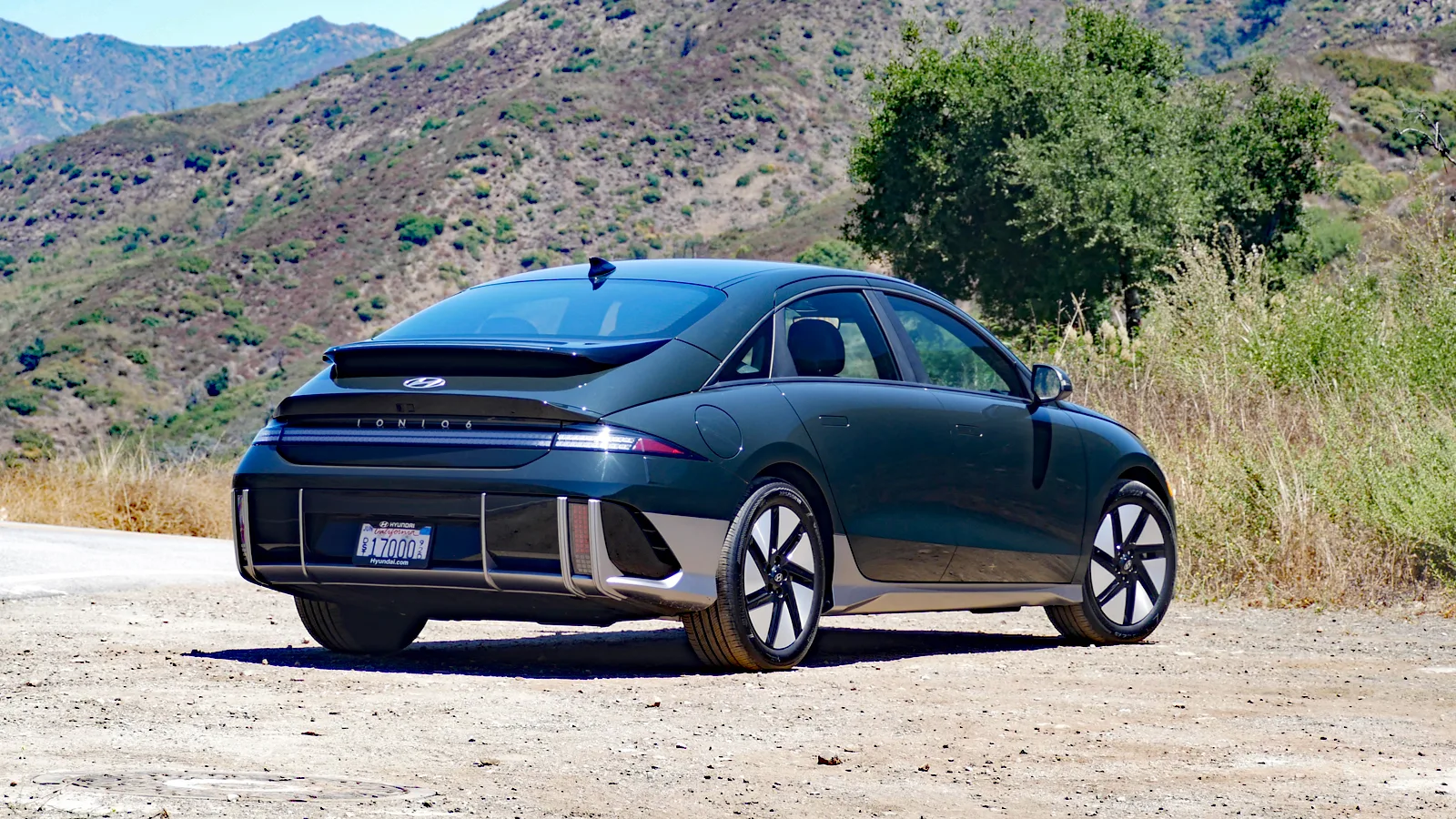
What's new for 2024?
The Ioniq 6 carries over unchanged for 2024.
What are the Ioniq 6 interior and in-car technology like?
The Ioniq 6 interior looks at first less bold than the streamlined exterior, but look closer, and it reveals itself to be one of the most creative cabins on the market. Though certainly reminiscent of the Ioniq 5, there are all kinds of unique details, such as the ripples on the doors that reflect the multi-color ambient light. Those doors are also distinctive in that they’re bereft of window and locking buttons. Those are on the center console, which admittedly takes some getting used to (unless you’ve owned a Jeep Wrangler or old BMW).
Materials quality also doesn’t look or feel as good as what you’d find in a Hyundai Sonata, for instance, or other midsize sedans. This is particularly evident in the base SE (pictured above in black), which is the only trim level available with the 361-mile range estimate. Its mandatory cloth trim looks and feels cheap, while the hard plastic phone bin will be a constant reminder that you didn’t opt for a high trim as your phone slides around without the benefit of wireless charging. You can read more about the Ioniq 6 SE interior here, but in general, we wish there were a way to get the max range with even a slightly nicer and better-equipped interior.
In terms of functionality, the Ioniq 6 mostly succeeds. The dual 12.3-inch screens are bright, clear and responsive, while the infotainment interface is one of the easiest in the industry to use. The supporting touch-sensitive climate controls are less so, and we dislike the need to call up a touchscreen menu to engage the heated and ventilated seats or heated steering wheel. We also miss the “radio” shortcut button found in most other Hyundai and Kia vehicles – again, you have to press one button (“Media”) to bring up a touchscreen submenu. On the other hand, the fact that the Ioniq 6 has physical controls at all, plus instruments in front of the driver, stands in sharp contrast to its main rival, the Tesla Model 3 and its one-screen-does-everything interior.
How big is the Ioniq 6?
Like the other E-GMP cars, the Ioniq 6 is deceptively large. The short overhangs and unusual proportions make it seem like a small vehicle, but it's only a couple inches shorter than the Hyundai Sonata family sedan. The long wheelbase allows the interior to be particularly large, especially in regard to legroom. Surprisingly, the hunkered-down shape of the Ioniq 6 doesn’t overtly compromise visibility (it’s quite good, actually), while headroom up front remains decent despite a seating position that’s perhaps a smidge high. The seats are wide but a bit flat, and loads of adjustment makes it easy to find a comfortable seating position. Rear headroom is a little tight due to that distinct shape created for the sake of aerodynamic efficiency, but again, legroom is vast. Six-footers will have no problem sitting back-to-back, and you’ll have no problem with kids’ shoes kicking the passenger seat up front.
The trunk, on the other hand, is poor. Its volume of 11.2 cubic-feet would be small for a compact sedan, let alone a midsize one. Not surprisingly, the Ioniq 6 was unable to swallow all the bags of our standardized luggage test. By contrast, the Sonata’s 16.3-cubic-foot trunk had space left over for multiple bags. There is a substantial underfloor storage area, however, plus a frunk compartment perfectly sized to store the tire mobility kit and charge cord.
What are the Ioniq 6 electric range and performance specs?
The Ioniq 6 has three powertrain options, two of which are single-motor, rear-drive setups, and the third with two motors and therefore all-wheel drive.
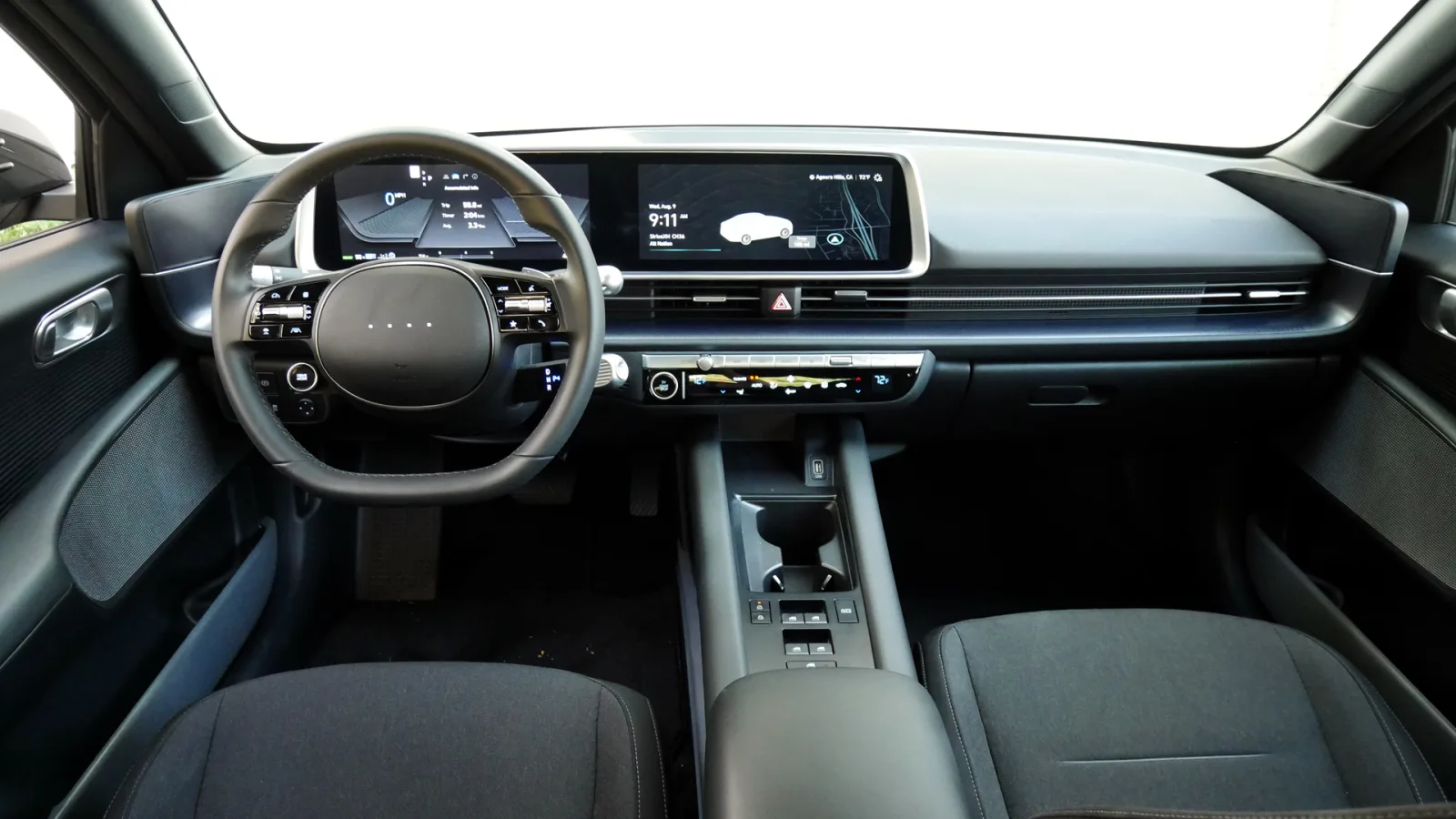
The first single-motor arrangement is exclusive to the SE Standard Range. It makes just 149 horsepower and 258 pound-feet of torque. It also gets the smallest battery, 53 kilowatt-hours, which returns an estimated range of 240 miles. It is quite efficient, coming in as the second-most frugal Ioniq 6 behind the long-range, rear-drive SE. Combined miles-per-gallon-equivalent is rated at 135.
Moving up to the other trim levels, the standard powertrain is the long-range, rear-drive option. It has a 77.4-kWh battery with higher output that allows for more horsepower from the rear motor: 225 horsepower. Torque remains the same at 258 pound-feet. That bigger battery offers better range, but the amount varies depending on the trim level. The SE has the best range at 361 miles, which is due to it being more efficient than the SEL and Limited on account of their larger wheels. The SE with rear drive returns 140 mpg-e combined. The SEL and Limited return 117 mpg-e and have a range of 305 miles.
Optionally available is the dual-motor, all-wheel-drive powertrain. With the addition of a front motor, power rises to 320 horses and torque to 446 pound-feet. Efficiency drops with the SE getting 121 mpg-e combined. Its range is 316 miles. The SEL and Limited get 103 mpg-e combined with a range of 270 miles.
Finally, lets talk charging speed. The Ioniq 6’s advanced 800-volt architecture allows it to swallow down electrons quicker than most other EVs. This greatly depends on the amount of kilowatts available at a fast charger, but all things being equal, we’d definitely rather have the faster-charging car available. The Ioniq 6 also charges very quickly at home, with 11-kW max speeds possible with an appropriate home charger.
What's the Ioniq 6 like to drive?
Interestingly, the Hyundai Ioniq 6 is the sportiest version of the E-GMP cars, apart from the high-performance Kia EV6 GT. The suspension is tuned stiffer, lending a much more responsive chassis with less body roll. The steering feels quicker and more accurate than its siblings, too. Selecting the heftier “Sport” steering mode really isn’t necessary.
The stiffer suspension does yield a correspondingly stiff(er) ride than its crossover(ish) cousins. That doesn’t mean it’s uncomfortable, though. Even on bigger wheels, we found it happily soaked up bumps and was an absolute highway champ during a road trip between Los Angeles and Las Vegas.
Acceleration is a big factor. We have yet to test the standard-range version, but given its meager 149 horses, we figure it’ll feel awfully slow even if it provides the usual initial electric kick off the line. The 225-hp extended-range rear-drive version certainly doesn’t provide the oomph of the 320-hp dual-motor Ioniq 6, but it also doesn’t feel slow. Unless you need the all-weather traction that all-wheel drive allows, we would stick with the extra range and lower price tag of the rear-motor/extended-range combo.
Also worth noting is that the Ioniq 6 has full one-pedal driving available. The regenerative braking force can be adjusted via the steering-wheel paddles, and at maximum, it can bring the car to a full stop. It's easily controllable, and the brake pedal feel and position remains consistent.
What is the 2024 Ioniq 6 price?
Think of the Ioniq 6’s pricing and feature content as breaking down into three columns, each tied with a different motor/battery combo. In the first there is the standard-range, rear motor combo only available in the base SE trim level. In the second is the extended-range, rear motor combo available in all three trim levels: SE, SEL and Limited. Finally, there’s the extended-range, dual-motor combo also available with all trims.
Keep in mind that there’s more to consider with your choice here than just getting your desired amount of equipment. Specifically, the dual-motor combo not only provides the all-weather assurance of all-wheel drive, it also carries with it a significant power increase along with a larger-than-usual price increase compared to gas-powered all-wheel-drive vehicles. It also loses electric range. Opting for the SEL and Limited also nets bigger wheels and therefore worse range.
All prices below include the $1,150 destination charge. No Ioniq 6 is eligible for a federal tax rebate, but there may be state-level rebates that apply.
SE RWD Standard Range: $38,650
SE RWD: $43,600
SEL RWD: $46,400
Limited RWD: $51,300
SE AWD: $47,100
SEL AWD: $49,900
Limited AWD: $54,800
What are the Ioniq 6 safety ratings and driver assistance features?
Every 2024 Ioniq 6 includes forward collision warning and automatic emergency braking with pedestrian and cyclist detection, lane-keeping assist, blind-spot and rear cross-traffic warning systems, Safe Exit warning (stops you from opening doors into cars or cyclists), driver inattention warning and adaptive cruise control with stop-and-go capability and lane-centering steering assist. The latter is known as Highway Drive Assist.
The SEL and Limited trims get Highway Drive Assist II, which adds partially automated lane changes (activate turn signal, car does the rest) and adapts itself to match your acceleration style. Those trims also add more proactive steering assistance for the forward collision and blind-spot warning systems. Finally, the Limited gains reverse automated braking, a surround-view parking camera system, remote smart parking using the vehicle remote, and a camera-based blind-spot monitor.
Besides the sheer volume of these systems, it’s important to note that they are among the best-executed in the automotive industry.
The Insurance Institute for Highway Safety named the Ioniq 6 a Top Safety Pick+, the highest honor available. Only its “Acceptable”-rated headlights got something other than a top mark in the many IIHS categories.
Source: autoblog.com

